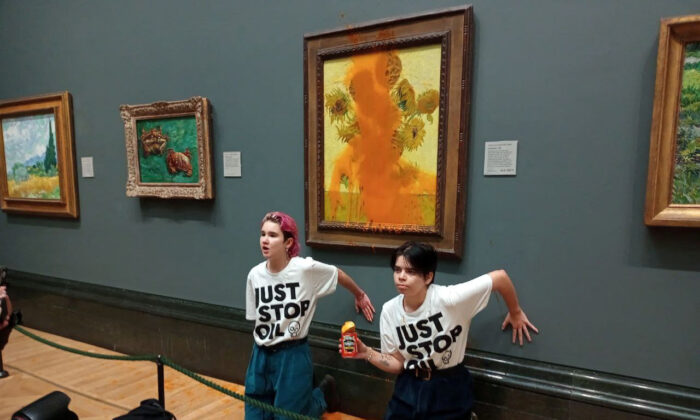Commentary
When the law, no matter how reasonable, is not adhered to by a significant portion of the educated class, it can lead to serious social conflict, or may have already occurred.
In England and elsewhere, unfortunately, many intellectuals now believe that if the law is broken for a supposedly noble cause, the offenders should not face punishment. An article in The Guardian newspaper highlights this issue, stating:
“More than 100 artists, curators, and art historians are advocating for two activists who threw tomato soup at Van Gogh’s Sunflowers [at the National Gallery, London] to be spared from a jail sentence.”
Among the supporters were academics from various foreign universities, indicating that this moral stance is not limited to the British alone.
However, this argument only holds if the action was indeed justified. The artists and academics who supported the activists failed to consider the potential negative impact of such behavior if left unchecked. Encouraging vandalism in the name of a cause could lead to increased security measures around artistic treasures, limiting public access.
Advocates for exoneration also claimed that the act of vandalism was a form of art and should be appreciated as such. They argued that the soup thrown by the activists should be seen as a creative expression.
But this perspective ignores the potential consequences of publicly endorsing such actions. Allowing vandalism for favored causes sets a dangerous precedent and could lead to a culture of sanctioned destruction.
The individuals supporting the activists did not consider the broader implications of their stance. Every individual with a cause could resort to damaging cultural heritage to gain attention, leading to chaos and loss of historical artifacts.
There seems to be no limit to the absurdity some people will embrace. Justifying vandalism as a creative act only perpetuates a cycle of destruction and undermines the value of artistic heritage.
Reflecting on this issue reminded me of William Blades’s critique, “The Enemies of Books,” where he highlights various threats to books, including neglect, ignorance, and vandalism. As a passionate collector of books, I am acutely aware of the importance of preserving our cultural heritage and artistic treasures.
The origins of the causes are not mutually exclusive and can be described as intersectional, as Kimberlé Crenshaw, a pioneer of Critical Race Theory, would likely say. In a story recounted by Blades, a servant once used the pages of a Caxton Bible to start a fire.
It is important to note that, in addition to the common adversaries of art such as ignorance and bigotry, those who defend, appreciate, and even promote the destruction of public collections are among the greatest threats to art in the modern world.
Fortunately, the judge in this particular case disregarded a letter advocating for leniency and instead sentenced the two young women involved to prison. William Blades would have surely supported this decision.
Please keep in mind that the opinions expressed in this article belong to the author and may not necessarily align with those of The Epoch Times.
Source link





